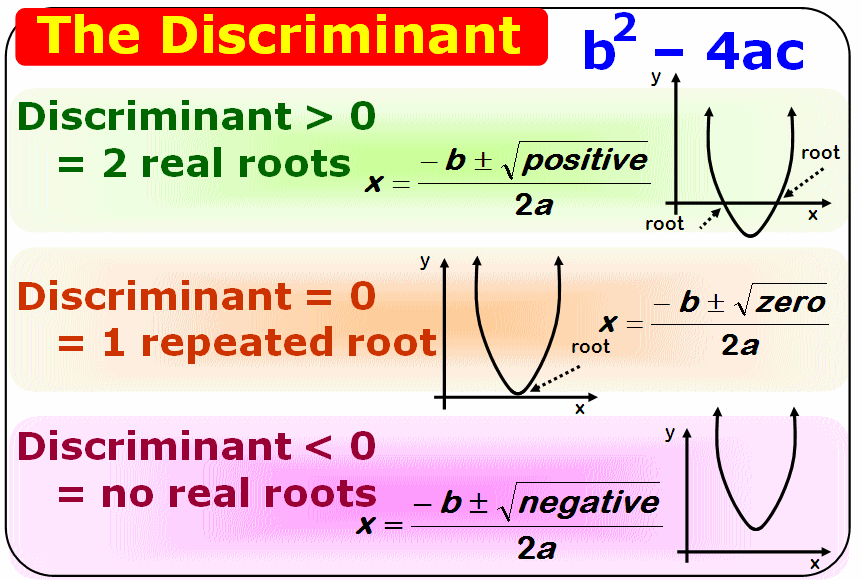
This means that the graph of the quadratic never intersects the axes.

The solution to the quadratic equation is given by 2 numbers x1 and x2. The general form of this is written as ax2 + bx + c 0, where a, b and c are all. Quadratic equation is a second order polynomial with 3 coefficients - a, b, c. This last equation is the Quadratic Formula.Y = \red 3x^2 \blue 4 A quadratic equation is an equation that looks like: x2 + 4x - 2 0. It is used to solve real-life situations. It may be helpful to look at one of the examples at the end of the last section where we solved an equation of the form as you read through the algebraic steps below, so you see them with numbers as well as ‘in general.’ Polynomial of type ax2 +bx+c, when equated to zero, gives a Quadratic equation. Now, we will go through the steps of completing the square in general to solve a quadratic equation for x. Example: 3x2-2x-10 (After you click the example, change the Method to 'Solve By Completing the Square'.) Take the Square Root. Since quadratics have a degree equal to two, therefore there will be two solutions for the equation. There are different methods you can use to solve quadratic equations, depending on your particular problem. Rewrite b a as 2 b 2 a x so that the second term is 2 p q. The formula for a quadratic equation is used to find the roots of the equation.
#QUADRATIC EQUATION SOLUTION FREE#
Divide both sides by a to free x 2 of its coefficient. First, we calculate the discriminant and then find the two solutions of the quadratic equation. Solving quadratic equations by graphing An equation has one root or solution if the x-intercept of the graph is 1.
#QUADRATIC EQUATION SOLUTION HOW TO#
We have already seen how to solve a formula for a specific variable ‘in general’ so that we would do the algebraic steps only once and then use the new formula to find the value of the specific variable. Subtract the variable c from both sides to get rid of the + c on the left. We have imported the cmath module to perform complex square root. However, Babylonian, and later, Greek mathematicians always discarded negative solutions of quadratic equations because they felt that these solutions had no physical meaning. By the end of the exercise set, you may have been wondering ‘isn’t there an easier way to do this?’ The answer is ‘yes.’ In this section, we will derive and use a formula to find the solution of a quadratic equation. The quadratic formula is a very old formula it was known to Babylonian mathematicians around 2000 B.C. These are the x-intercepts The graph will cross up to two. (You can also use your calculator to get the solutions.) Take the two solutions and put them in factors. The solutions to a quadratic equation are the values of x where the graph crosses the x-axis.


The roots can be equal or distinct, and real or complex. Use the quadratic formula to get solutions for x. Every quadratic equation has exactly two roots. When we solved quadratic equations in the last section by completing the square, we took the same steps every time. The name ‘quadratic’ means square because the equations contain the square of the unknown variable.

Example: 3x2-2x-10 (After you click the example, change the Method to Solve By Completing the Square.) Take the Square Root. If you missed this problem, review (Figure). There are different methods you can use to solve quadratic equations, depending on your particular problem. Before you get started, take this readiness quiz.


 0 kommentar(er)
0 kommentar(er)
